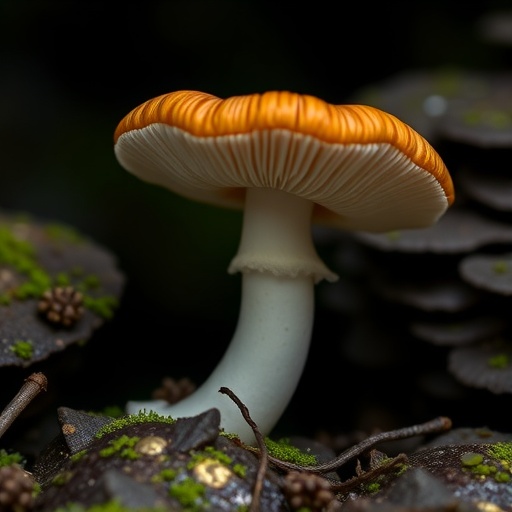
In a groundbreaking study that uncovers the intricate relationship between environmental factors and animal behavior, researchers have delved into the effects of noise, temperature, and humidity on hornbills at a zoo. This fascinating research offers vital insights into how these external stressors impact not just the health but also the behavior of these colorful avian species that play significant roles in their ecosystems. As urbanization and climate change continue to pose challenges for wildlife, this study sheds light on the implications for animal welfare and conservation strategies.
Hornbills, known for their distinctive bills and unique nesting behaviors, have become a focal point in studying animal responses to environmental conditions. The researchers, Tay et al., have consistently highlighted the need for a better understanding of how external stimuli like background noise, ambient temperature, and relative humidity can influence the health and wellbeing of these birds. This study stands out due to its comprehensive approach to examining these variables in a controlled environment — the confines of a zoo.
One of the primary components of this research was evaluating how different levels of noise exposure affected hornbill behavior. The results revealed that increased noise levels led to heightened stress indicators among the birds. The significance of these findings cannot be overstated, as it suggests that urban zoos, often surrounded by the cacophony of city life, may inadvertently induce stress in their animal inhabitants. This stress correlates with various negative outcomes, including changes in feeding behavior, mating rituals, and social interactions among hornbills.
Likewise, temperature fluctuations were assessed to better understand their impact on hornbill activity patterns. The study outlined how extreme temperatures could either enhance or inhibit specific behaviors, particularly those relating to feeding and nesting. In instances of elevated temperatures, hornbills exhibited lethargy, which could have dire implications for their overall health. These findings align with broader research on the effects of climate change on animal behavior, reinforcing the urgency of understanding how rising global temperatures can affect species across the board.
Humidity was another critical factor investigated in this study. The research demonstrated a clear connection between humidity levels and hornbill behavior. High humidity appeared to restrict the birds’ ability to engage in typical behaviors such as foraging and preening. Such restrictions could lead not only to poor physical condition but also to an increased vulnerability to disease and parasites. Birdwatchers and zoologists alike are now urged to consider these factors in their observations and interactions with hornbills.
In conversing with the lead author, Tay emphasized the importance of creating more environmentally mindful habitats within zoos. As the findings suggest, integrating soundproofing techniques and regulating temperature and humidity could significantly enhance the well-being of hornbills. This research advocates for progressive zoo management that prioritizes animal welfare, which, ironically, can also enhance visitor experiences as the animals thrive.
Moreover, the study’s implications extend beyond the realm of zoo management; they offer a framework for understanding how environmental changes impact wildlife more broadly. Conservationists can leverage these insights as they work to safeguard endangered hornbill populations in their natural habitats, where factors such as deforestation, climate change, and habitat fragmentation compound the existing challenges these birds face.
The cumulative results of the research call for immediate attention to how modern urban habitats are designed, not only for human enjoyment but also for the welfare of resident animals. As cities expand and new projects emerge, it becomes crucial to consider the acoustic landscape and climate microenvironments that can either nurture or marginalize wildlife.
Looking forward, the researchers plan to extend their investigations beyond hornbills, setting their sights on other species that share similar habitats and are susceptible to the aforementioned environmental stressors. This holistic approach could offer valuable insights into the interconnectedness of behaviors across different species, allowing for a deeper societal understanding of biodiversity conservation.
In summary, the insights provided by Tay et al. mark a pivotal step in emphasizing that animals such as hornbills are profoundly affected by the environments they inhabit—an obvious fact that has often been overlooked. By shedding light on these interactions, this research aims to bridge gaps in knowledge that can inform policies, promote awareness, and encourage proactive measures that prioritize animal welfare across zoological and conservation efforts worldwide.
The sensational results of this study articulate a clear message: we need to listen closely to the ‘voices’ of our wildlife. The effects of our environments are not merely scientific data points; they present a narrative of the bond between nature and urbanization—a relationship that must be harmonized for the future health of our ecosystems.
This research underscores a transformative journey in how we perceive and engage with animals within human-made environments. As we learn more about the needs and behaviors of hornbills and other species, there is potential for a significant shift in how zoos operate, transforming from mere entertainment venues into sanctuaries that prioritize the holistic well-being of their inhabitants.
To capitalize on this momentum, the research team plans to disseminate their findings widely, hoping to spark conversations among researchers, conservationists, and the general public. The ultimate goal is simple yet profound: to cultivate a shared ethos of responsibility and respect for all creatures, and to foster environments that allow wildlife to flourish, even amid human expansion.
This study serves as a poignant reminder of our responsibility towards the creatures that share our planet. As stewards of the environment, we must strive to create spaces that prioritize the health and happiness of wildlife, ensuring that the vibrant symphony of nature continues to resonate for generations to come.
In conclusion, the ramifications of this research are profound and far-reaching. As human-induced changes to the environment continue to escalate, our understanding of how animals respond is not just academic—it is critical for the survival of species at risk. Ensuring that future developments in zoos and natural reserves take into account the preferences and needs of animals like hornbills may very well be the first step in maintaining the delicate balance we share with nature.
The future of wildlife—both in captivity and in the wild—depends on our ability to adapt and enhance our environments. As this research elucidates, the intersection of noise, temperature, and humidity is a pivotal aspect that cannot be ignored. By taking action based on these findings, we can foster habitat conditions where wildlife thrives, sending ripples of positive change throughout ecosystems at large.
Subject of Research: Hornbill Behavior in Relation to Environmental Factors
Article Title: The influence of noise, temperature, and humidity on hornbill behaviour in a zoo.
Article References:
Tay, C., Fernandez, E.J., Xie, S. et al. The influence of noise, temperature, and humidity on hornbill behaviour in a zoo.
Discov Anim 2, 20 (2025). https://doi.org/10.1007/s44338-025-00063-0
Image Credits: AI Generated
DOI: 10.1007/s44338-025-00063-0
Keywords: Hornbills, Environmental Impact, Animal Behavior, Zoo Management, Wildlife Conservation.
Tags: animal behavior and environmental stressorsanimal welfare in captivityconservation strategies for hornbillsecological roles of hornbillshornbill behavior in zooshumidity effects on hornbill welfareimpact of environmental factors on wildlifeimplications of climate change on animal welfarenoise pollution effects on birdsresearch on avian species behaviortemperature influence on animal healthurbanization effects on wildlife




